A summer of intense field-work for the GreenFjord project
GreenFjord / EPFL / Lionel Favre / 2023
GreenFjord is a four-year research program intended to investigate how climate change is affecting ecosystems in southern Greenland. The scientists just completed a first intensive field season where they won over the local residents. The next step will be to analyze the millions of datapoints they collected.
Julia Schmale is no stranger to harsh research environments. She spent significant time in the past ten years either working in a lab on an uninhabited Sub-Antarctic island with polar ocean as far as the eye could see, or on icebreakers as they drifted with Arctic sea ice, always far away from humans settlements. That changed in 2022 when she formed a consortium of experts of a research program called “GreenFjord”, led the proposal writing and then won the competition of the Swiss Polar Institute, which appointed her to direct one of its four-year flagship projects.
Southern Greenland is one of the regions most exposed to climate change, yet much remains to be learned about how its ecosystems will react to this exposure. The area is complex owing to its glaciers, series of fjords that spill into the ocean and mountain chains. In addition, the local communities – which subsists on fishing, reindeer herding, agriculture, and tourism, for example – are highly vulnerable to the potential climatic disruptions affecting all aspects of life.
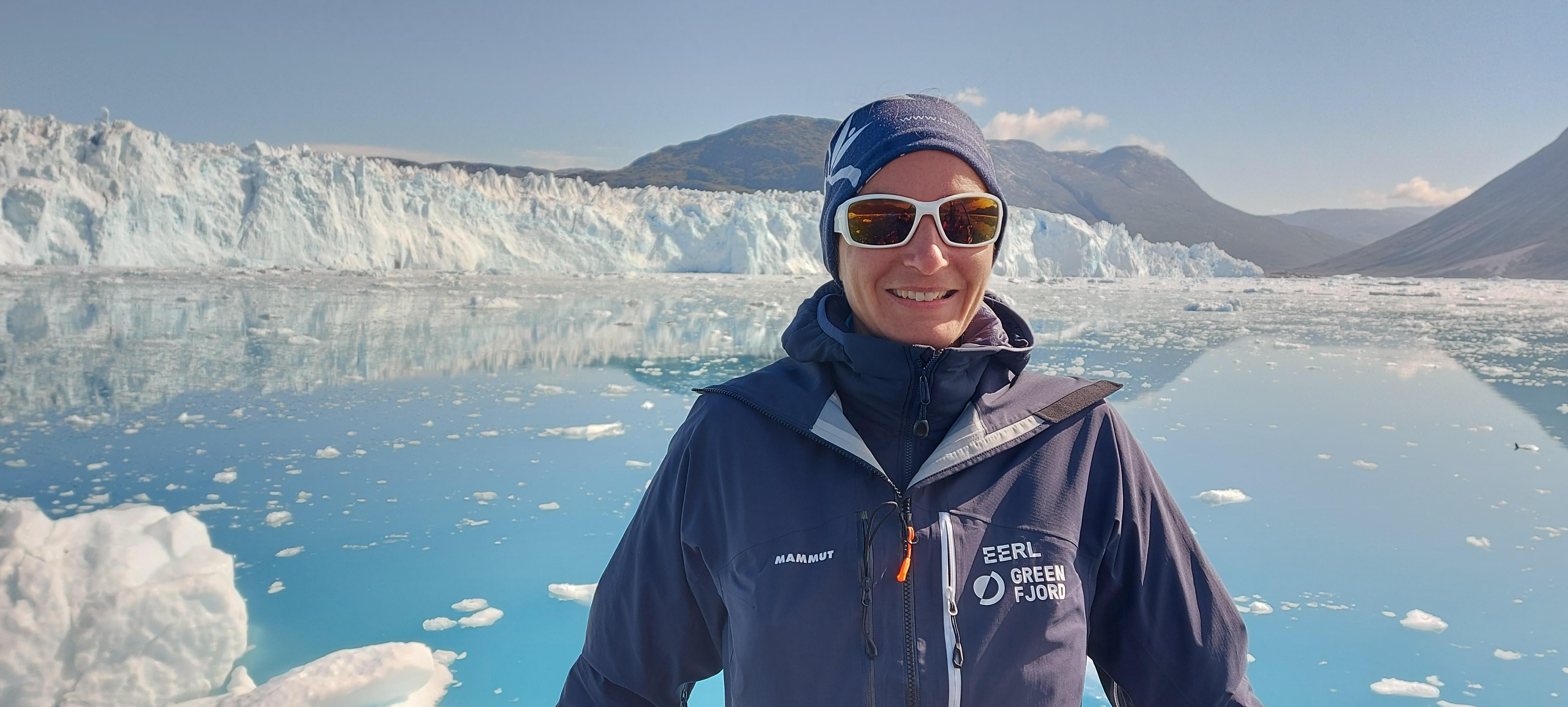
Holistic approach
The GreenFjord project aims to better understand the shifts taking place in Southern Greenland’s ecosystems. The scientists have adopted a holistic approach that involves measuring atmospheric changes, the local carbon cycle, fjord dynamics, glacier retreat and overall biodiversity. They’re also assessing the societal impact through interviews with the local community. At the heart of the project are two fjord systems, where in one the glaciers terminate in the water, and where in the other the ice has retreated so far that it ends on land. The latter fjord system is a surrogate for the future.
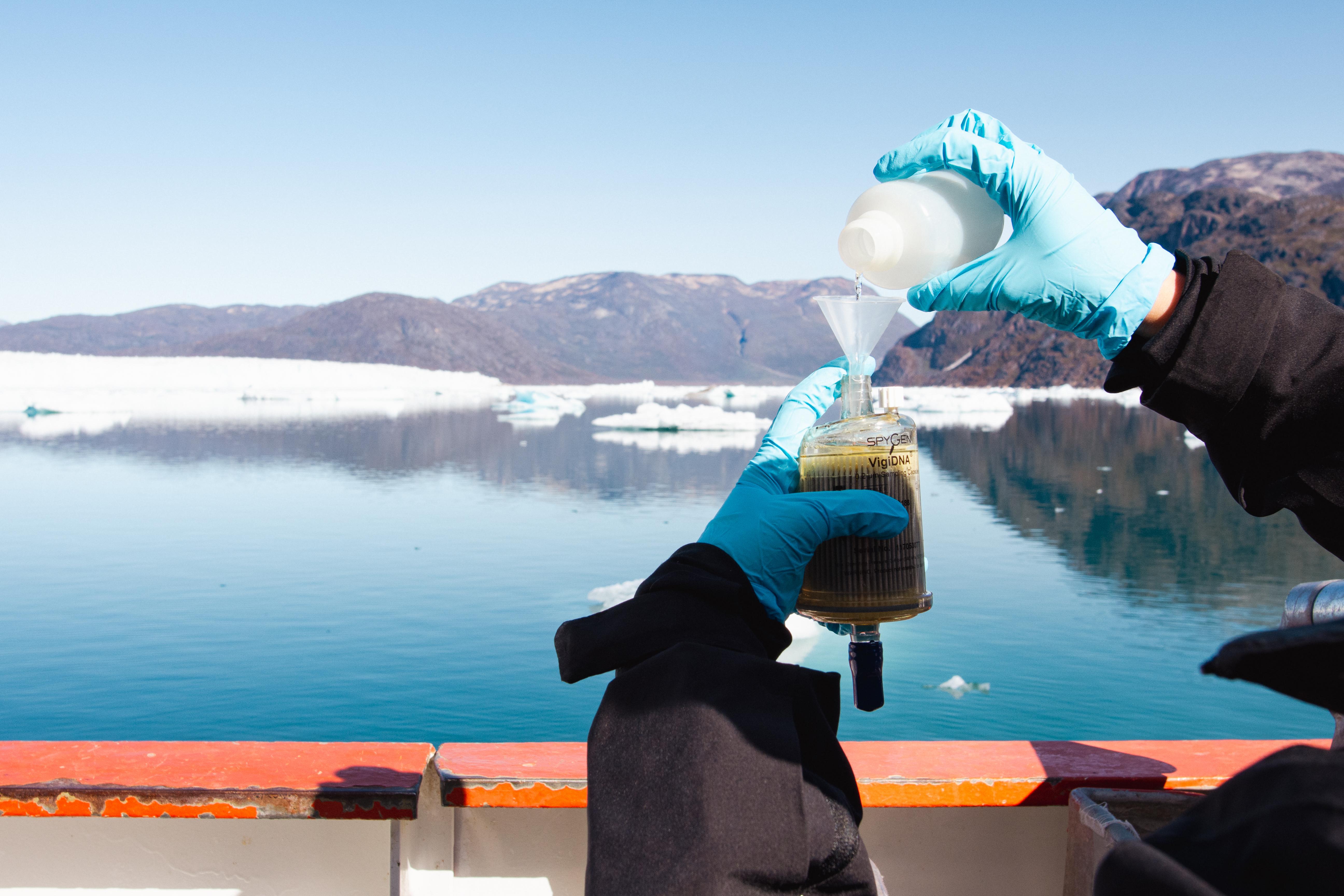
The project is being carried out through six research clusters with a total of about 50 scientists at around a dozen research centers in Switzerland and abroad. “The effects of climate change are three to four times greater in Greenland than anywhere else in the world,” says Schmale. “We need to understand the processes involved in environmental transformation so that we can better prepare for the consequences, that is adapt. What happens in this part of the world affects everyone, ultimately.” The research lab she runs, Extreme Environments Research Laboratory (EERL), is part of the ALPOLE research center on extreme and polar environments at the campus of EPFL Valais Wallis.
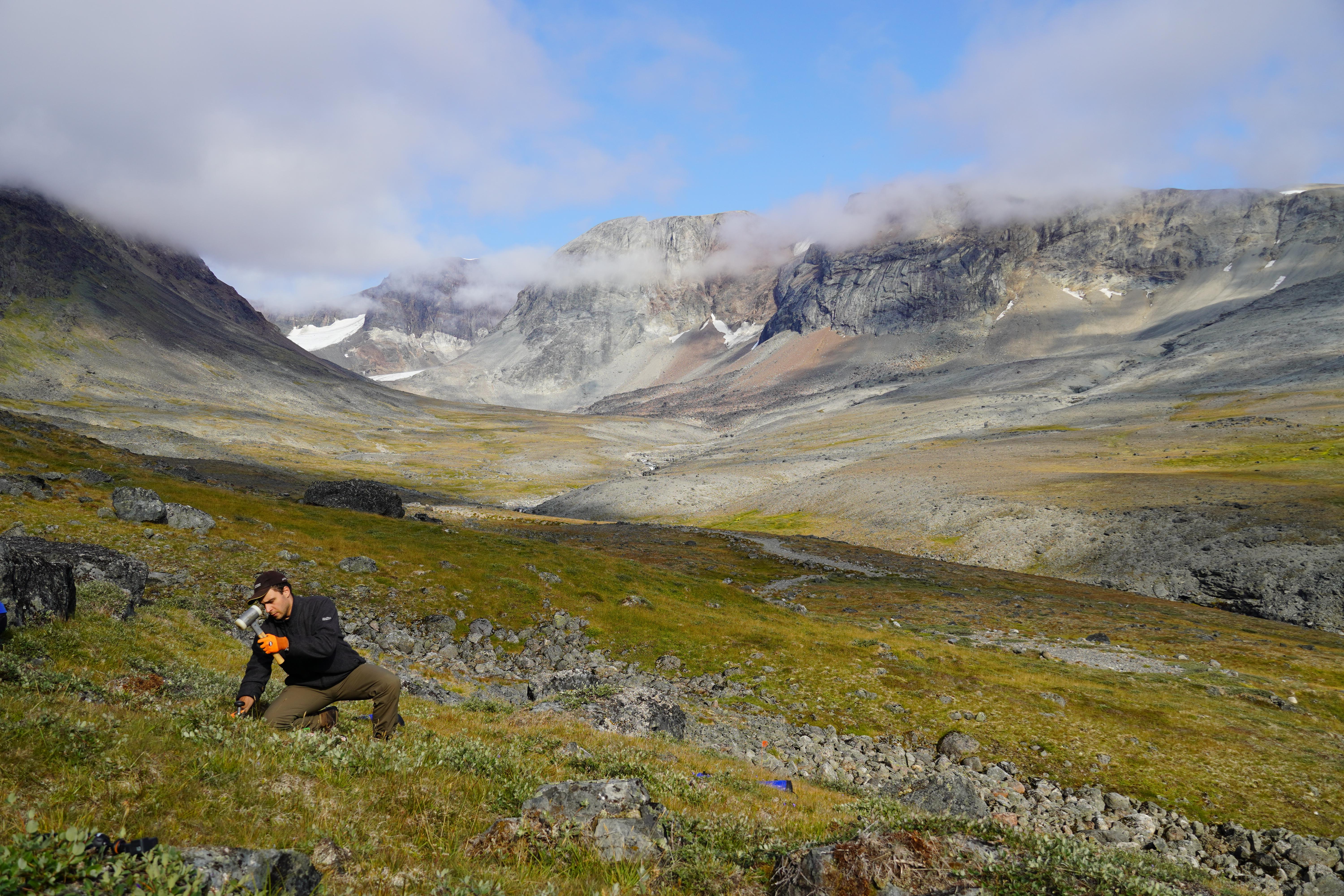
Everyday life
The data-collection phase of the project ramped up between May and September of this year. Around 50 scientists visited the area and were successful in collecting millions of data points. Schmale arranged with the Narsaq International Research Station (NIRS) located in Narsaq, a village of 1,300 residents, to function as field hub for GreenFjord. A total change of context for her field work. The on-site scientists are housed in the station and other local wooden and colorful houses. They’re immersed in village life, which revolves mainly around farming, a slaughterhouse, fishing, a school and food college, community services, such as a fire station and transportation logistics. It’s a village where everyone knows each other and greets each other in the streets.
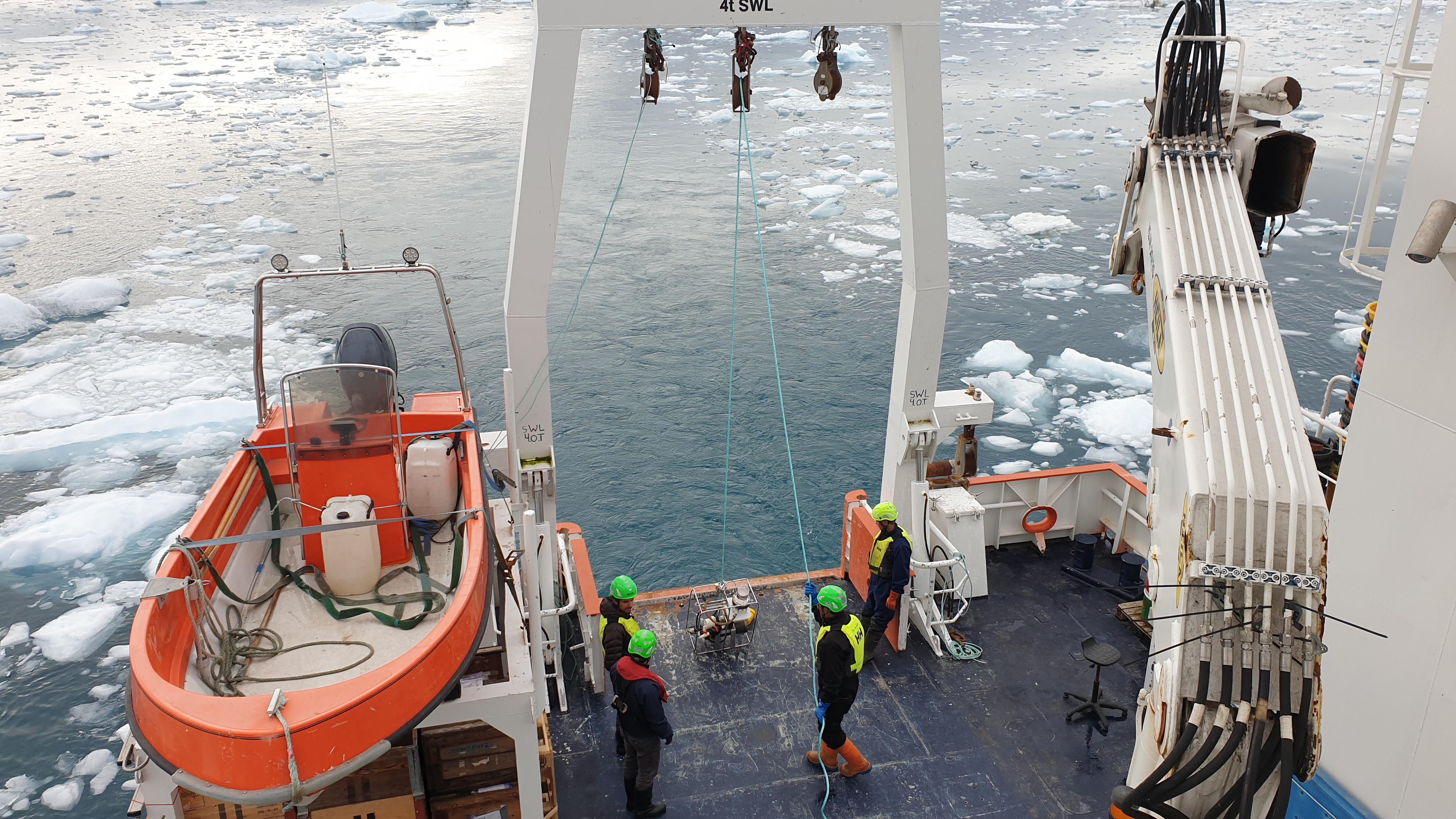
Ocean, land and icebergs
Several research clusters explored the two contrasting fjords by using Greenlandic research vessels, the Adolf Jensen and RV Sanna. They assessed the overall dynamics along with temperature and nutrient variations, the storage of greenhouse gases in the water, such as methane, and fjord biodiversity. They also placed a fiber-optics cable on the ocean floor so that they could “listen to” the marine terminating glacier – that is to document the loss of mass when an iceberg breaks off. To that end, the research group also set up a radar, seismographs and time-lapse cameras amongst other.
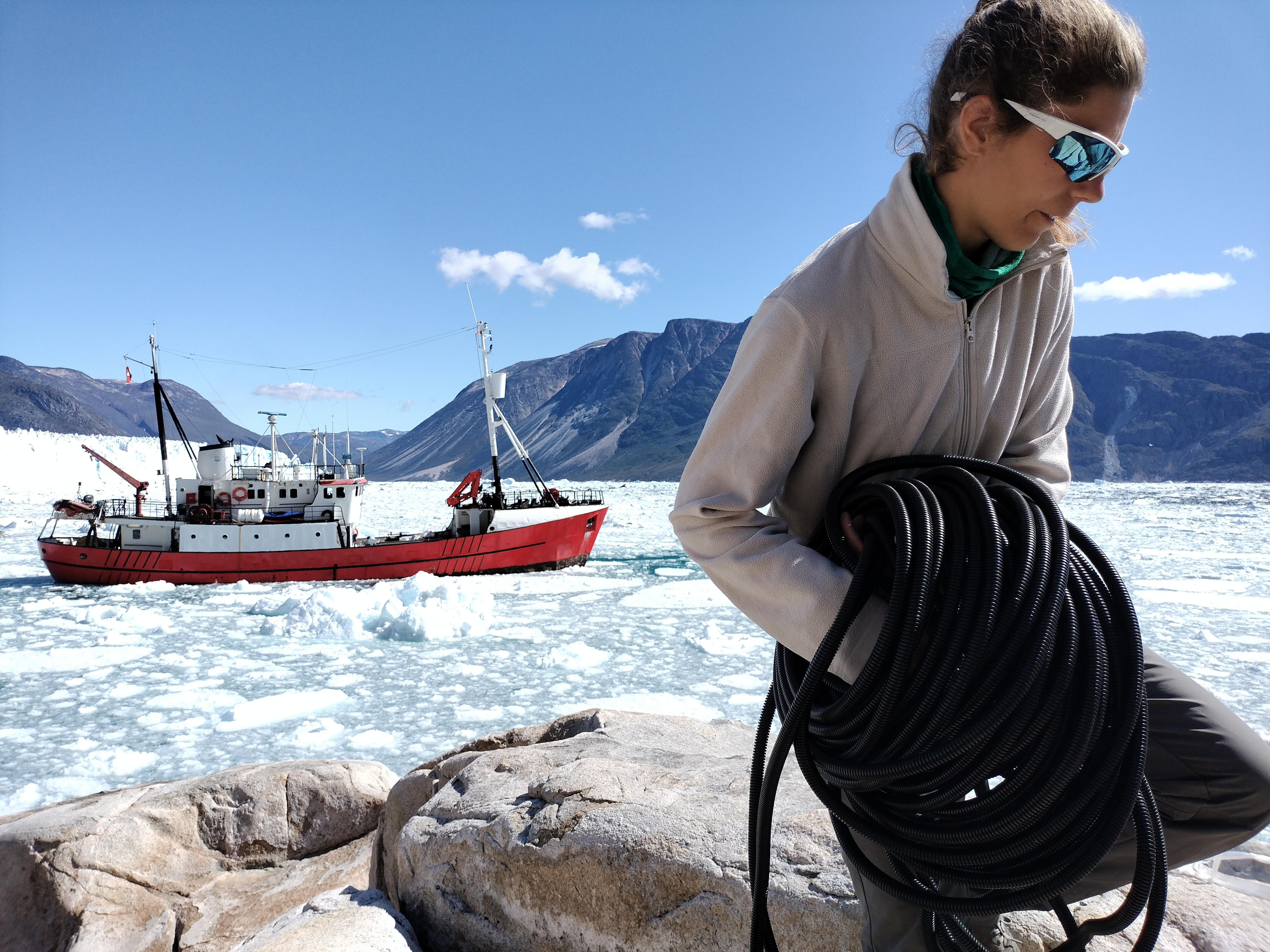
Tracking dust
Several clusters collected samples of the soil, water and glacier-fed-stream sediment in collaboration with a team that took detailed measurements of the dust that’s accumulating due to glacier retreat, as part of the Eco-Plains project – an interdisciplinary research project carried out at EPFL’s School of Architecture, Civil and Environmental Engineering (ENAC). Eco-Plains is headed by Schmale along with Ianina Altshuler, an EPFL tenure track assistant professor, and Devis Tuia, an EPFL associate professor. “Dust can alter the process of cloud formation and lead to changes in precipitation patterns,” says Schmale. “As dust particles move from the ground to the atmosphere they can act as seeds for ice crystal formation and thereby influence clouds.” The scientists also set up three weather stations – one near the coast and two further inland – with instruments for collecting air particles, including dust to measure how dust is elevated into the air.
DNA sequencing will be carried out on these field samples collected in GreenFjord, but also on samples taken from the ice, air and water, in order to determine the biodiversity in terms of plants, animals and microorganisms and get a complete picture of the region’s biodiversity.
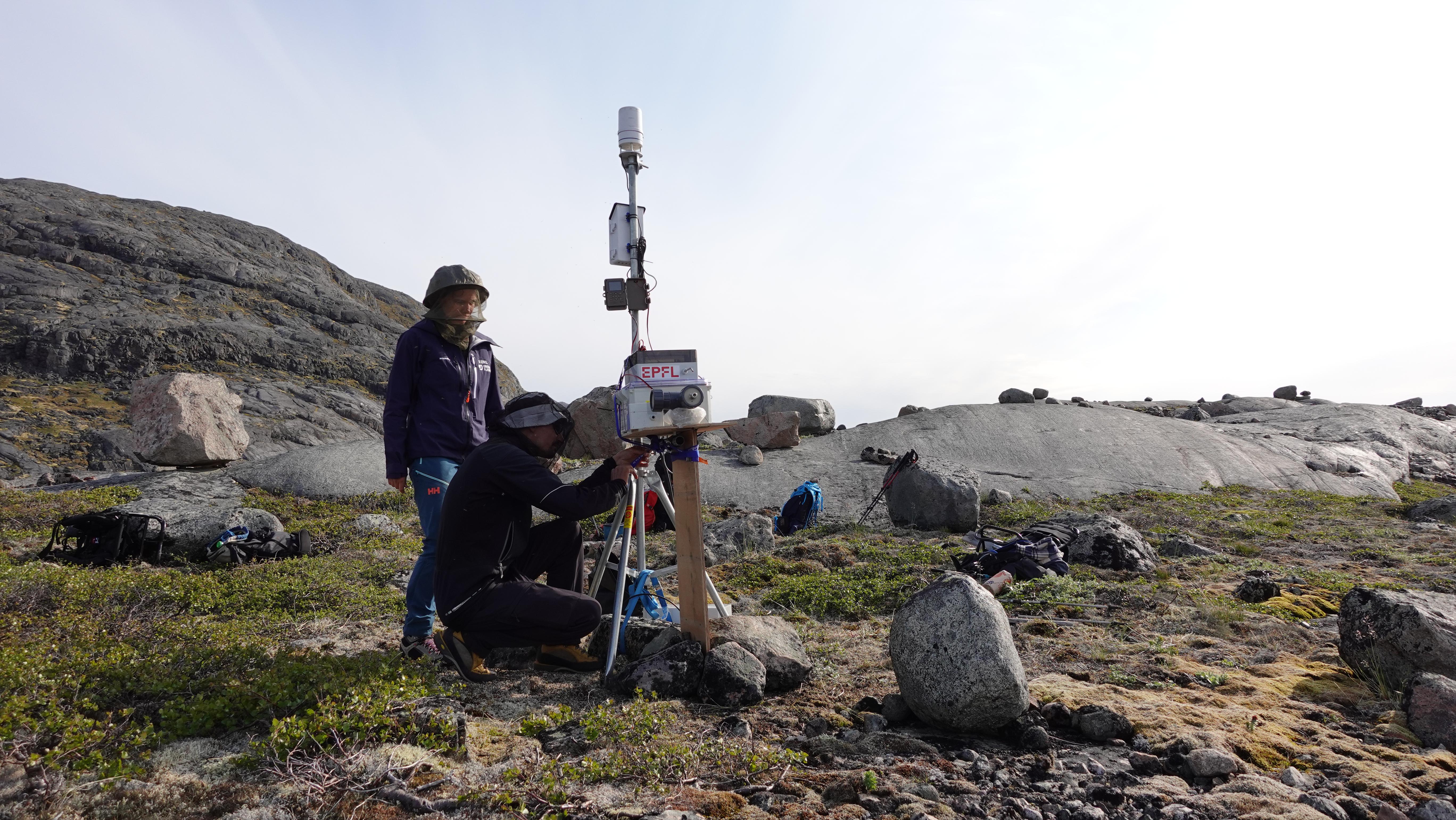
Above the clouds and fog
Schmale and the other scientists didn’t go unnoticed by the curious residents of Narsaq, especially when the team deployed one of its key instruments for measuring atmospheric composition – a red and white tethered balloon proudly bearing the EPFL logo. It floated over the village for eight weeks, in near-daily flights that turned into an entertaining show for the villagers. “A young girl from the neighborhood started coming by every morning to help us unwind the balloon’s cords and untie the knots so it could fly,” says Schmale. The platform is designed to rise above the clouds and fog that are often found in the region owing to its many fjords. Scientists will study the air particles it observed to determine whether the cloud and fog are the result of anthropogenic activity, natural fjord emissions or glacial dust.

Getting to know the local community
This year, the scientists set up a GreenFjord page on Facebook, which is popular in the village. They posted announcements of the tethered- balloon launches and invited Narsaq residents to attend, as they could also listen to the researchers discuss their work in the region. “People of all ages came to our launches, from schoolchildren to pensioners,” says Schmale. “These events helped us earn their trust. I think they were proud their village could host our study. We also ran a contest to select a name for the balloon. The winner was nattoralik, which means ‘large white sea eagle’ in Greenlandic.
As forest fires spread through Canada in July, the sky over Narsaq darkened under the smoke. Here too, the scientists used their Facebook page to provide helpful information about what was happening and how it was affecting the atmosphere.

Changes in the landscape
The research group that interviewed the Narsaq residents conducted commented walks, where local residents explain perceptions and historic significance of landscape features. They also held a photo contest where people could send in images depicting what their landscape meant to them and how they saw it changing in the future. “The glacier retreat means there probably won’t be many icebergs around anymore one day in the far future, which will completely upend the local landscape’s identity,” says Schmale.

Data analysis and giving back
Greenland’s national newspaper published a long article on GreenFjord this summer. For the scientists, this was important recognition of their field work and a reminder that they have a responsibility to the people of Greenland. The team will spend the next several years of the project compiling and analyzing the many datapoints they’ve collected and are yet to produce from laboratory analysis. Later, Schmale and the GreenFjord leadership plan to return to Narsaq to present the main findings of their research. She explains: “Thanks to our interdisciplinary efforts, we’ll be able to better assess the impacts of rising temperatures, glacier retreat and changing fjord dynamics on local livelihoods. These data will also give us important insight into how similar fjord regions in the Arctic, e.g. Svalbard might evolve, leading to better scenarios of how the Arctic might develop and might impact climate at a global scale.”
Numerous collaborations
The GreenFjord research program (2022-2026) funded by the Swiss Polar Institute is based on six research clusters consisting of 50 scientists from a dozen academic institutions. Here are the Cluster Principle Investigators:
- Atmosphere Cluster: Julia Schmale, Extreme Environments Research Laboratory, EPFL.
- Biodiversity Cluster: Loïc Pellissier, Landscape Ecology Research Group, WSL / ETH Zurich; Kristy Deiner, Environmental DNA at ETH Zurich.
- Cryosphere Cluster: Andreas Vieli, Glaciology and Geomorphodynamics Group, Geography Department, University of Zurich.
- Humans Cluster: Laine Chanteloup, Environmental Cultural Geography, University of Lausanne
- Land Cluster: Lisa Bröder Biogeoscience at ETH Zurich
- Ocean Cluster: Samuel Jaccard, Marine Geology and Biogeochemistry, University of Lausanne
More info: https://greenfjord-project.ch/
Swiss Polar Institute
Links
- ALPOLE
- Eco-Plains project
- EPFL News, "It felt like we were living on another planet”, 16 July 2020
- EPFL News, "New research program will study fjord ecosystems in Greenland", 9 March 2022
- GreenFjord project
- Narsaq International Research Station (NIRS)
- Press kit with photos and videos to download
- Swiss Polar Institute